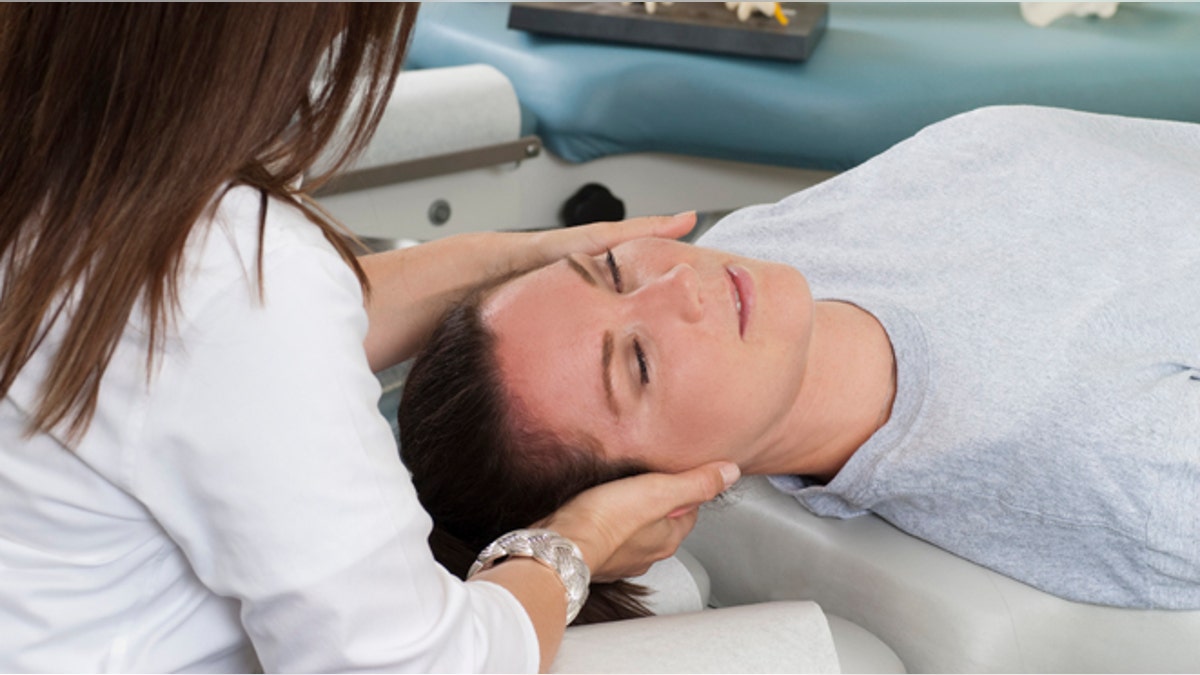
(Copyright © Eliza Snow Lightstyle Photography)
After enduring car accidents when she was a young woman— none of which were her fault— Mary Steinhoff was left with chronic, debilitating pain that lasted for 29 years.
“I was in constant pain, [from] head to toe,” the 56-year-old from Morrisville, North Carolina said.
In fact, the pain was so bad that she couldn’t raise her right arm or lie flat. As a result, she battled insomnia and fatigue, sleeping just 2 to 3 hours every night for years. It was also challenging to drive and impossible to concentrate or read a book.
“It can be an excruciating journey physically, emotionally and spiritually,” she said.
It wasn’t until 2002 that she was finally diagnosed with fibromyalgia, but she continued to live in pain as she tried virtually every treatment available: physical therapy, massage, aqua therapy, acupressure, medication, yoga, psychotherapy and prayer. She even bought a new mattress, tried a gluten-free diet and stopped eating sugar— nothing helped.
“I was desperate to fix this,” she said.
Although chiropractic treatment helped a bit, it wasn’t until she met Dr. Ray Drury, an upper cervical chiropractic doctor in Charlotte, North Carolina last year that she finally found some relief. Upper cervical chiropractors specialize in correcting a small misalignment of the upper neck known as the Atlas Subluxation Complex, according to the National Upper Cervical Chiropractic Association.
Drury discovered that Steinhoff’s atlas, or C1 vertebra, was tipped 4 degrees forward, which meant that her neck was flat. Since it didn’t have a natural curvature, it was impossible for her to lay flat. He also discovered that her upper cervical spine was not only turned to the right, which caused her spine to turn left, but it was also severely twisted.
After her first upper cervical adjustment, Mary returned home, took a shower and started sobbing. When her husband walked in, alarmed, she rejoiced, “It doesn’t hurt to wash my hair!”
“It was startling to say the least,” she recalled.
What is upper cervical chiropractic?
The first spinal adjustment ever performed was on the upper cervical spine in 1895 by Dr. D.D. Palmer, who restored a deaf man’s hearing. Although the practice faded out over time, it has seen a resurgence in the past 15 years and is the fastest growing area in chiropractic, said Drury, who is also the author of “The Best Kept Secret in Healthcare.”
The concept of upper cervical chiropractic has to do with the brain stem, which comes out of the head through the top two bones of the neck, known as the atlas (C1) and axis (C2). The brain stem works like a switchboard operator, controlling all of the messages between the brain and the body.
“If one of those bones gets even slightly out of line it can interfere with the messages between the brain and the body,” Drury said.
Using gentle adjustments to the upper cervical spine, the treatment can help people with things like ear and sinus infections, migraines, chronic fatigue syndrome, diabetes, sleeping disorders and digestive problems, multiple sclerosis, fibromyalgia, immune disorders, trigeminal neuralgia and seizures.
In fact, a recent study conducted in Italy found that upper cervical chiropractic adjustments on patients with chronic venous cerebral-spinal insufficiency and multiple sclerosis had improved function in multiple areas of the body after just 6 weeks.
Instead of treating the symptoms as Western medicine does, upper cervical chiropractic looks to identify and treat the root cause.
“We don’t treat conditions, we treat the body. When everything is balanced and nothing is interfered with, the body is a self-healing organism,” Drury said.
The amount of adjustments needed and how often depend on the individual, the degree of misalignment and how long the individual has had the misalignment.
“As it holds longer, they need to see us less and less,” Drury said. A treatment can also cause soreness, particularly if you’ve had pain for several years.
It may not be for everyone
Although there is a possibility that upper cervical chiropractic can help those with serious conditions like MS and fibromyalgia, “unfortunately, the research backs up more of what I would call the biomechanical or neuromusculoskeletal aspect,” said Dr. Erik Korzen, a chiropractic physician, professor and advocator in Mokena, Ill..
Korzen says those conditions can include tension headaches, poor posture, nerve irritation due to arthritic or degenerative changes, which can cause symptoms like numbness, tingling and headaches.
There are also certain conditions where upper cervical chiropractic is contraindicated, such as significant osteoporosis or degenerative changes. To avoid damange, individuals with Down syndrome must have X-rays taken before having treatment, in order to see if they have skeletal abnormalities. Although treatment may help people who have seizures, manipulation could actually trigger an episode, depending on the type of seizures.
Plus, adjustments that involve an excessive amount of rotation could actually cause more damage, and over time, can cause laxity in the ligaments.
As more research is conducted and technologic advances are made, clinicians are faced with deciding to either use treatment for conditions that aren’t backed by research and may cause harm or avoid the risks altogether by not using treatment that has the potential to help, Korzen said.
Now, nearly a year after starting treatment, Steinhoff can completely lift her arm, lie down and sleep for 4 to 6 hours each night. She recently also finished reading an entire book, is making plans to be more social and is hopeful about the future.
“I know that I’m probably never going to be free of chronic pain but to be able to manage it day to day is such a blessing,” she said.
